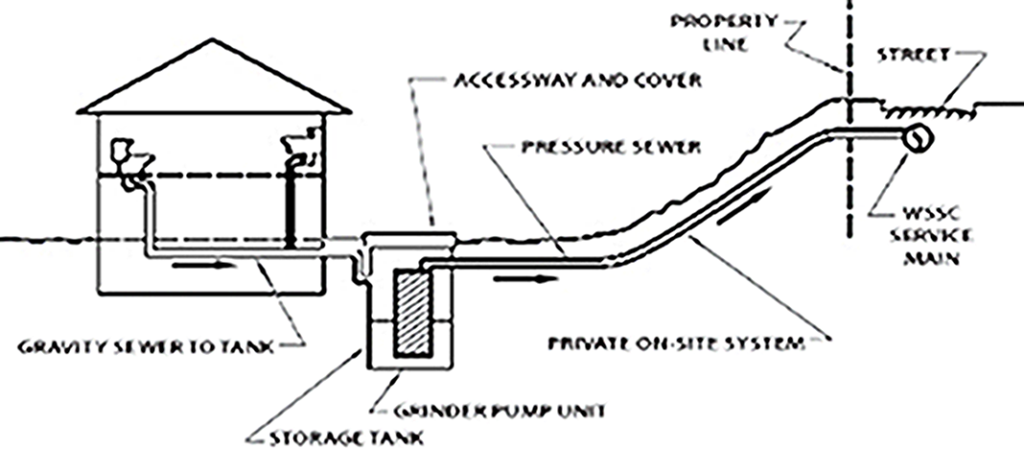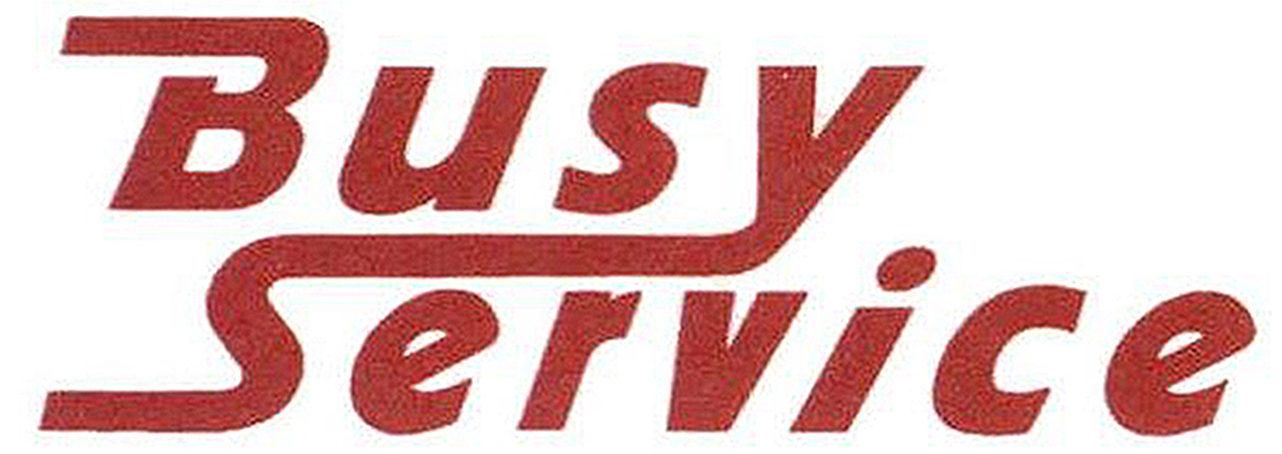Grinder Pump FAQ’s:
How does a grinder pump work?
A grinder pump is placed in a tank (or well) that is buried in a convenient outdoor location on a homeowner’s property (grinder pump units also can be purchased for inside installation). The tank provides wastewater holding storage capacity. When water is used in the house, wastewater flows into the tank. When the wastewater in the tank reaches a pre-set level, the grinder pump automatically turns on, grinds the waste, and pumps it out of the tank via the homeowner’s on-site sewer service line and into the public sewer system. A grinder pump will normally run for one or two minutes and automatically turn off when the tank is emptied. The pump is powered by electricity and is connected to a control panel near your electric meter.

Why do some homes/businesses need grinder pumps?
In most instances, wastewater flows by gravity from a home/business’ on-property sewer service line to a public sewer main where it travels to wastewater treatment plants. At the plants, the wastewater is cleaned, disinfected and safely returned to the environment. However, because of elevation, gravity may not work in all instances. In situations where a home/business’ sewer service line leaves the building at a lower elevation than the public sewer main, a grinder pump is sometimes used to grind and pump wastewater to the main.
Who is responsible for the grinder pump?
Most of the 1,500 grinder pumps in Montgomery County are on private property and therefore are the responsibility of the property owner. The same is true for the private sewer service line on the home or business owner’s property. WSSC’s responsibility for sewer service begins after the property line in the public right-of-way.
What can I do to protect my grinder pump?
A properly maintained grinder pump should be able to handle
wastewater from the kitchen, bathroom, laundry, etc. However,
some chemicals and substances can adversely impact a
grinder pump and may cause safety hazards. Please check the
labels on all chemicals before using / disposing. Also, never
pour the following items down drains or flush down toilets:
- Grease ( a byproduct of cooking that comes from meat fats, oils, shortening, butter, margarine, food scraps sauces and dairy products)
- Explosive or flammable material
- Kitty litter
- Aquarium gravel
- Strong or toxic chemicals / caustic or poisonous substances
- De-greasing solvents
- Diapers, feminine products, or cloth of any kind
- Fuel or lubricating oil / paint thinner or antifreeze
- Plastic objects
- Seafood shells
- Fiberous Materials such as: Baby Wipes (all types), facial wipes, etc…
- Prophylactic devices
- Dental Floss
- Q-tips
**Essentially, the only things that should flushed are: 1’s, 2’s and TP’s.**
These items can damage the grinder pump and its controls, cause blockages and backups and may create unsafe conditions in your lines and tank. Also, never connect a sump pump to sewer lines. Doing so is a violation of the WSSC Plumbing and Fuel Gas Code and decreases the sewer mains’ flow capacity while increasing wastewater treatment costs. In the case of a grinder pump, a sump pump connected to the sewer system may raise your electric rates and shorten the life of your grinder pump.
What should I do with my pump when I go on vacation?
If you plan on being away for several days, replace the wastewater in the tank with clean water to help minimize odors. To do this, run an inside faucet for about 10 minutes – long enough for the grinder pump to start working (you may need to go outside near the pump and listen to verify it has started). After the pump starts, turn the inside faucet off. The pump will run until the tank is empty and shut off automatically. This process will cleanse the pump and keep it filled with a minimum amount of clean water. Remember to always leave the power to the pump on.
